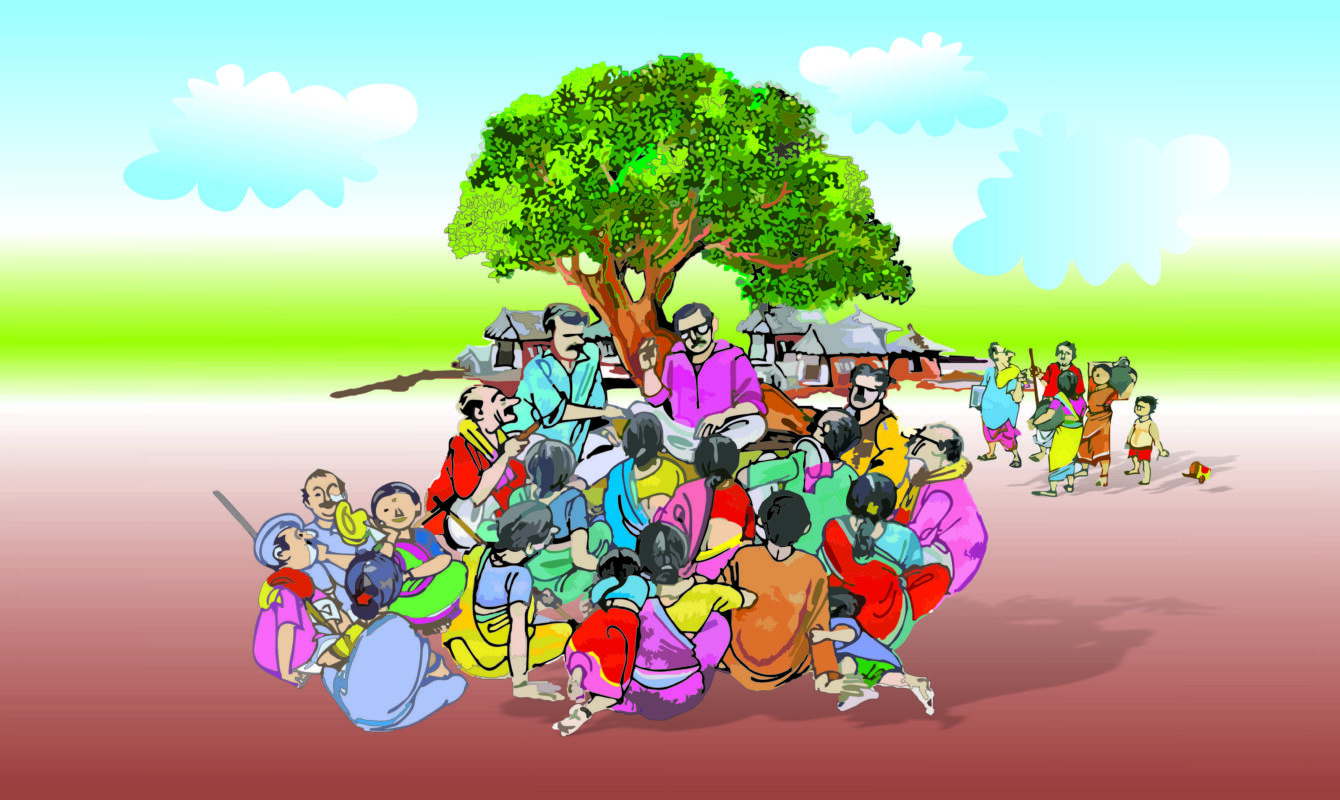Most teachers who teach Social Studies to students usually face the problem of their students not understanding anything. This definitely happens while giving lessons on the ‘Panchayati Raj System of India’. The reason why students don’t understand anything is that the teachers don’t really know how to teach Panchayati Raj of India like a PRO to students.
Panchayati Raj System of India gets introduced in Grade – 3 & in much detail in Grade – 6.
Students who live & study in an urban area find it difficult to relate with the concept of the ‘Panchayati Raj System’ because they neither have seen it nor heard of it. They find the topic totally ‘unfamiliar’.
In this article, we have written about ‘Panchayati Raj System?’, ‘Levels of Panchayati Raj System’, ‘Gram Sabha’, and the ‘Tips that you can use to teach Panchayati Raj System like a PRO’.
What is Panchayati Raj System?
Panchayati Raj System is a structured de-centralized government where people participate in their own government. Panchayati Raj system is a level of a democratic government.
Levels of Panchayati Raj
Panchayati Raj has 3 levels:
· Village level (called Gram Panchayat)
Gram Panchayat is the assembly of five elders who are elected by the villagers. Gram Panchayat includes Sarpanch (President of Panchayat), Ward Members (Panchs), and the secretary.
The sarpanch is responsible for the settlement of all villagers’ disputes. Gram Panchayat is elected for 5 years. It is a local body that collects taxes, constructs & maintains the school buildings, roads, water sources, etc.
In other words, Gram Panchayat works for the development of the village. The work of the Gram Panchayat has to be approved by the Gram Sabha. Gram Sabha is constituted by all members of a village over the age of 18 years.
· Block (Tehsil) level (called Janpad Panchayat or Panchayat Samiti)
The Panchayat Samiti has many Gram Panchayats under it.
· District level (called Zila Parishad)
Parishad makes development plans at the district level.
Gram Sabha
Gram Sabha is a body comprising of people registered in the electoral rolls in a village or in a group of villages & it is responsible for the election of a Panchayat.
Features of Gram Panchayat:
Here are a few features of the Gram Panchayat:
- The Gram Sabha will work as a supervisory body, & audit & regulate the functioning of Gram Panchayats.
- Recommendations of the Gram Sabha will be binding on the Gram Panchayat.
- Every village which comes within a Gram Panchayat can have separate Gram Sabhas.
Tips you can use to teach Panchayati Raj of India like a PRO
Here are the tips that you can use to teach Panchayati Raj of India like a PRO:
- Divide the students into groups (You can Put ‘5’ students in one group, for example).
- Let one girl be a part of each group.
- Give each group enough discussion time to find their own sarpanch who will be the leader of that particular group.
- Change the leader of all the groups often. Students can only realize the duties and responsibilities of someone in charge if they have given a chance to be in their shoes. This will also help in enhancing a student’s leadership skills.
- Try to present a problem in front of the students, just like the villagers directly put all their problems & hurdles in front of the Panchayat. Let the students have a debate over it so that they would come up with the best solution for all the problems.
- After the debate is over, Let the Sarpanch announce the decision made by him & the group members.
Importance of the tips provided:
- By doing all these things, your students will develop a deep understanding of the subject of the Panchayati Raj System. Not just they will have a piece of theoretical knowledge, they also will get exposure to a real panchayat because of the role-plays.
- They will be more confident in discussing the Panchayati Raj System or any topic that is related to it at any phase of their life.
- Panchayati Raj is a form of government at the village level where each village has the responsibility for its own activities. Learning about this form of government will help the students understand how government at the State, National, or International levels do their work.
- Role Plays will help students develop Public speaking skills at an early age.
- Students who find themselves nervous or timid in front of other people will overcome that feeling of nervousness by speaking out loud in front of all their classmates.

